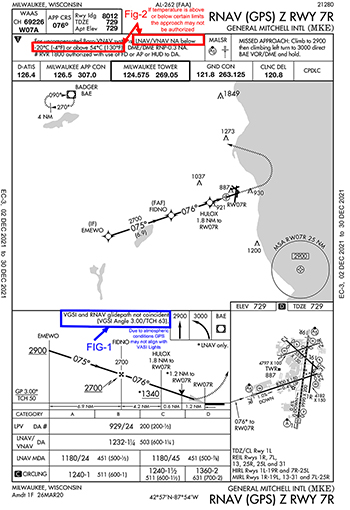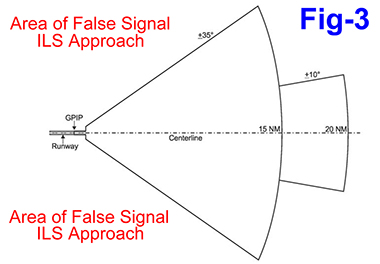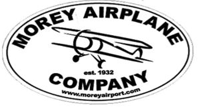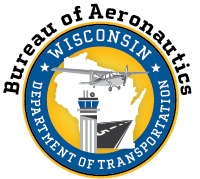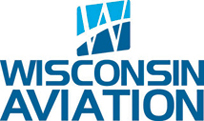by Pete Schoeninger
© Copyright 2022. All rights reserved!
Published in Midwest Flyer Magazine April/May 2022 online issue
Q) A friend has offered to sell me his airplane at what I consider a fair price. He did mention that there is an old lien from a bank that went out of business 20-plus years ago, and that he was sure there would never be any repossession action. Should I buy it?
A) Not immediately! Don’t buy it until, and unless, you can get a clear title search from a title company or attorney. That snag on the title will be a significant hinderance when the time comes for you (or your estate) to sell the airplane, even if no repo company ever chases you. Sometimes, but not always, a title company or an aviation attorney can get a title cleared for you for a modest fee. Two good aviation attorneys who are contributing editors to Midwest Flyer Magazine are Greg Reigel and Ed Leineweber. Give Greg a call at
214-780-1482 or email greigel@shackelford.law, and Ed at 608-604-6515 or email eleineweber@leineweberlaw.com.
Q) I heard the original Piper PA-32 Cherokee SIX could legally carry seven (7) people, but the newer PA-32 models, Lance and Saratoga, cannot. Is that true?
A) The Cherokee SIX 260 and 300 models, and the Lance, can legally carry seven (7) people IF equipped with bench seats and IF weight and CG limitations are observed. Three people (none with big butts) sit in the middle bench seat, two passengers in the rear seats, and two up front. To the best of my knowledge none of the versions of the Saratoga had bench seats, so max people capacity is six (6) people. Note the Cherokee SIX was the father of the Lance, and the grandpa of the Saratoga. Whatever you do, when in doubt, never take a chance. It’s always best to be conservative when people’s lives are at stake.
Q) A trivial Cherokee SIX question. A friend said a very few early Cherokee SIX airplanes had fixed-pitch props. Is that true?
A) Yes, but their performance was not good. Constant speed props were a much better choice. I don’t recall ever seeing a Cherokee SIX with a fixed-pitch prop. Answers to these and other questions can be found online by searching PA 32 Type certificate and look at the FAA information that comes up and go to the end of the information and read “notes.”
Q) What preparation for tailwheel transition, if any, can I do in flying my Piper Archer?
A) Do your best to touch down on landing with NO drift, and with the longitudinal axis of your airplane exactly in line with the runway. Being able to do these two things will make tailwheel transition easier for you.
Q) Can you recommend any internet sites for armchair viewing?
A) I have enjoyed and frequently view the following sites: AOPA Air Safety Institute; Dan Gryder, search Probable Cause: Dan Gryder; Scott Perdue, search Flywire – Scott Perdue; Juan Browne, search Juan Browne Blancolirio.
Q) I’ve been looking for an older used four-place simple airplane, looking mostly at old C-172s and a few Cherokees. While on vacation far from home I came upon a Stinson with a Franklin engine for sale. The owner took me for a ride. That airplane has lots of room and is attractively priced. Should I consider it?
A) A major consideration if buying any airplane that is not brand B, C, or P, is, do you have a local or nearby mechanic familiar with them? If your local mechanic happens to be familiar with Franklin engines and Stinsons, it could be a serious consideration for you. (Remember, you will need a tailwheel endorsement if you do not already have one.) But if your local or nearby mechanics are not familiar with Stinsons, or whatever somewhat unusual airplane you are considering, it would be hard to go wrong buying a Cessna 172 or Piper Cherokee.
Q) Last summer, a friend had his J-3 Cub painted by a “shade tree” mechanic for a thousand bucks, cash! He calls it a “Hundred Foot paint job” because it looks OK from a distance only. The mechanic used school bus yellow equipment enamel, and just washed the airplane, then scuffed it very lightly, then painted it with two coats of that cheap yellow paint, using about 3 gallons. Then the owner flew it home and did the masking for the N numbers and lightning stripe that almost all J-3 Cubs have. Is that possible, or legal?
A) Yes, possible, but NOT recommended, and probably illegal. Most paint applications now require a properly vented spray booth, the FAA will recommend controls removed and balanced, logbook entries, etc. In short, don’t do it. But here’s a major FAA violation… If your friend flew the airplane home with no N number on it, that’s a big no no.
Q) I think you have answered this before, but how can I find ownership history of my recently acquired 1962 Piper Comanche?
A) Do an internet search for “FAA CD.” You can buy a CD from the feds for about $10.00 that will show chain of ownership since manufacture, as well as maintenance highlights.
Q) What kind of ground hazards should I watch out for this spring?
A) Different hazards to be aware of include insects plugging your pitot system, birds building nests in your engine cowling or tail area, soft/wet fields, and gusty winds when you are parked outside. Spring gusts can blow an untied airplane around on a ramp, so tie it down before leaving it parked!
Q) And how do I detect insects and birds?
A) For insects in your pitot system, as you start your take-off run from experience you know about when your airspeed indicator should come alive. If at that point you see no motion on your airspeed indicator, you might want to abort the take-off and investigate. Birds building nests will sometimes drop a few pieces of grass and poop as they enter your airplane.
Q) You told my friend when taking a neighbor for a ride over their house, try and do it toward evening. Why then?
A) Air is usually smoother mornings and evenings, than mid-day. Early morning flyovers might upset some neighbors, so I suggest evening flights are a good idea. Another good idea is to have your friend’s neighbor tell his neighbors to watch for them, rather than be surprised.
Q) What’s the best way to get good publicity for our local airport and its businesses?
A) Invite the public to come out to your airport by offering discounted rides and introductory flights, and sunset flights on the slowest day of the week (Monday?). Of course, fly-in breakfasts are always well received by the public or offer families the opportunity to seat in an airplane and tour maintenance shops, offices, and hangars.
Q) I am going to have to spend about $7,000 at my annual inspection on my 172M for propeller replacement (mine won’t pass overhaul inspection,) and a new alternator, and battery. How much if any will these changes affect the value of my airplane?
A) Sorry to tell you, the items you mentioned add almost nothing to value. They are maintenance items needed to be changed occasionally to keep the airplane in airworthy condition. Cosmetic items like new paint and interior, and avionics upgrades, will increase your airplane’s value somewhat, but not as much as they cost.
Q) How does the American Champion Scout compare to the Aviat Husky?
A) Salesmen for either will claim a better airplane. Overall, they are pretty similar – well-built, two-seat, fabric-covered, strong utility aircraft suitable for off-airport operations, available with 180 to 210 hp Lycoming engines. The Husky is built to newer FAR 23 standards, and the Scout has lineage back to the old Aeronca Champion (although there are huge differences). Both have good factory support. The Scout offers a lower retail price, and more fuel capacity. If you’re in the market for a rugged utility airplane, take a good look at both of them, then contact an owner or two of each for their feedback. You can’t go wrong with either. Huskys are made in Afton, Wyoming, and Scouts are made in Rochester, Wisconsin.
Q) Recently, I landed for the first time at a big airport with my flight instructor. (I am a new private pilot). On final approach, the tower switched runways on us, and we had to land on the huge runway airliners normally land on. We arrived okay, but with a good hard thud because I had a difficult time with depth perception. Any ideas on how to better gauge depth perception in this situation? Any tips?
A) This problem (depth perception on a big area) can occur on wide paved runways and is more frequently a problem on wide grass or snow-covered runways or when landing on lakes. What some pilots do is to make their last few feet of descent at a very gradual rate, and slightly nose high. You won’t know exactly when you are going to touch down until you do. This technique is very frequently used by seaplane pilots landing on smooth water.
Q) Of the three most popular “classics” (i.e. Piper J-3 Cub, Aeronca 7AC Champ, and Taylorcraft BC 12D), people tell me the Cub is significantly slower. Is this true? If so, why?
A) Yes, it is true. As I recollect from yesteryear flying those airplanes, a Cub will cruise at about 70 mph, a Champ at about 80 mph, and a Taylorcraft at about 90 mph, all with 65 hp engines. The Cub has two big drag makers; the others do not. The first is obvious – the eyebrow cowlings that stick out in the breeze and deflect cooling air over cylinders. The second is the big shock absorber system Cubs have that sit outside the cabin in the slipstream.
Q) A friend told me that there is a great book by a Cessna engineer about the development of various Cessna models from 1950 to 1985, but it is expensive. Do you know what he is talking about?
A) I suspect that’s CESSNA WINGS FOR THE WORLD by Bill Thompson. It is an excellent book detailing single model introductions, and subtle improvements. The author also includes a few funny flight test stories. If you have interest in Cessnas of that vintage, I highly recommend this book. Expect to spend around $100 for it in paperback. Expensive, yes, but the knowledge is priceless. (I bought my copy for 20 bucks 25 years ago!)
Q) To settle a bet, could you affirm my belief that the Cessna 175 was Cessna’s most quiet single-engine airplane? If you know anything about them, how about a brief description.
A) Yes, you are correct according to Bill Thompson, because the prop turned relatively slow, reducing prop noise. (See previous question.) The 175 was a unique airplane, powered by a souped-up Continental 0-300 engine. The engine normally produced 145 hp and was also installed in early 172s. Cessna and Continental got 175 hp out of that engine by upping the redline RPMs by about 500 to over 3200, but with the prop geared down to around 2400 rpms. Engine TBO was only 1200 hours. Many of the remaining model 175s have had engine changes, most to the 180 hp Lycoming, which improves reliability, increases TBO, and increases performance over the original 175 hp model. About 2,000 were built from 1958 to 1962, and available on wheels with options to install floats or skis. I did own one (with a new 180 hp conversion)…paid $10,000 in 1982. I should have kept it!
Q) Any comments on the rapid rise in prices of some used airplanes? Will it continue with the possible re-emergence of Covid?
A) If you own an airplane which has appreciated rapidly, you might want to call your insurance agent and consider raising hull value coverage. You don’t want to have a total loss (totaled) on your airplane (to say $100,000), only to find out that the settlement you receive from your insurance company will not come close to paying for a similar airplane, now for sale at perhaps $125,000. On the future direction of used airplane prices, I think in normal times prices would continue to rise given the very small number and high prices of new airplanes made. But I am not sure we are in for normal times, so I won’t hazard a guess on price direction. Old age, and too many wrong guesses about airplane price trends in my previous life, have turned me into a Wisconsin Chicken!
Q) I learned to fly in a 1970 Cessna 150. The fuel system was stone simple… it was either on, or off. Now I am checking out in a 1980 Cessna 172. It has a 4-position fuel valve, both on, both off, or left or right. What should I know about this?
A) When you position the fuel valve in that C172 to both, fuel can flow freely between the two main tanks like your Cessna 150. This is the most common fuel position to use. When parked, fuel will flow thru the fuel selector if in both position until the tanks are roughly even. If you park the airplane on uneven ground, fuel may flow from the higher tank to the lower tank, causing the lower tank to vent fuel overboard. In the new generation C172s, the checklist recommends placing the fuel selector away from both when parking the airplane and I think that’s a good idea to do in older Cessna 172s as well.
An incident I am aware of occurred when a fuel cap was not placed on the right tank of a Cessna. Most of the fuel vented overboard in flight, and as the fuel in the right tank lowered quickly, fuel in the fuller left tank flowed into the right tank, only to be sucked overboard as well. This happened on a flight of about an hour, and most of the 80 gallons or so onboard were gone. Had the pilot selected one tank, rather than both, the fuel in the left tank would not have flowed in the right tank.
Q) As a follow-up question, what airplanes have fuel quirks to know about?
A) Many do, and a pilot must know and understand them all to be safe. A couple of odd ducks: the old two-place Swift had two wing tanks, but only one filler tube, and it was easy to think you had completely fueled the airplane when the “other” tank still was not full. Some Bonanzas are placarded against taking off when there is minimum fuel in the selected tank. Some old Cessna 172s needed to be switched to a single tank upon reaching 5,000 feet. On Citabrias, the low point in the fuel system, which you should sample before flight, is on the bottom of the fuselage well behind the landing gear.
Q) A friend has a Bonanza and is going to put a turbine engine in it. What will he gain by doing so besides a big hole in his wallet?
A) Several things… For some, it is the “Machismo” sound of a turbine starting that will get all the airport bums to look at him. Performance-wise, the turbine engine with 100-150 more horsepower will provide a shorter takeoff roll and a stronger rate of climb than the piston engine it replaced. The airplane will be a little lighter because the turbine engine is lighter than the piston engine it replaces (that’s why the turbine engine must be mounted further ahead of the firewall) which allows a little more useful load. But there is no free lunch, as that turbine engine will suck lots more fuel per hour than the piston engine it replaces. So, in some situations, your actual range with reserve will be less with the turbine engine. To get good fuel economy in a turbine engine, you should get pretty high, which requires an oxygen mask, which many pilots and passengers don’t like. Some issues to be aware of with the turbine… It has happened that they are mis-fueled with aviation gasoline rather than the required jet fuel. Something else to be aware of is that at many smaller general aviation airports, mechanics will be familiar with the Bonanza airframe, but not the turbine engine if/when maintenance is needed.
EDITOR’S NOTE: Pete Schoeninger is a 40-year general aviation veteran, starting out as a line technician as a teenager, advancing through the ranks to become the co-owner and manager of a fixed base operation, and manager of an airport in a major metropolitan community. He welcomes questions and comments via email at PeterSchoeningerLLC@gmail.com.
DISCLAIMER: The information contained in this column is the expressed opinion of the author only, and readers are advised to seek the advice of others, and refer to aircraft owner manuals, manufacturer recommendations, the Federal Aviation Regulations, FAA Aeronautical Information Manual and instructional materials for guidance on aeronautical matters.











